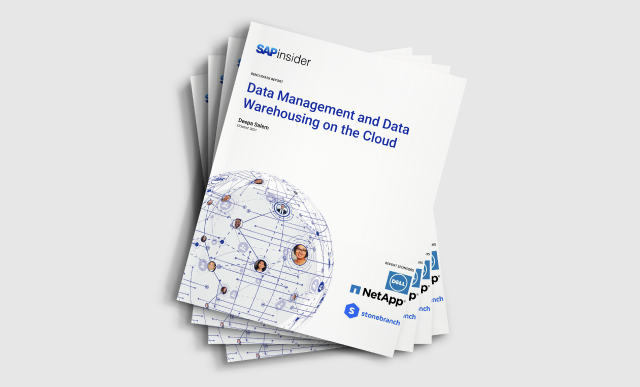SAP S/4HANA: Maximize ROI and Mitigate Risk With MuleSoft Data Integration
Enterprise technology moves fast. In the modern workplace, cios and IT leaders’ roles have significantly changed. They are no longer solely responsible for managing IT infrastructure; instead, they’ve become strategic leaders driving digital transformation initiatives.
One such initiative that has gained prominence is the migration to SAP S/4HANA, SAP’s next-generation enterprise resource planning (ERP) suite. S/4HANA migration is critical for business continuity, compliance, and gaining advanced features – mistakes can disrupt operations and hinder growth.
Integrate data, maximize ROI, and minimize risk
Let’s explore critical aspects of S/4HANA migrations or transformations, with a specific focus on the vital role that data integration plays in ensuring a successful, risk-mitigated, and value-driven transition.
As an IT leader, understanding the importance of data integration in the context of S/4HANA transformation is paramount. S/4HANA signifies a seismic shift in how organizations manage their business processes and data. It offers the potential for streamlined operations, enhanced user experiences, and real-time insights.
This transformation is driven by several factors, including the end of support for SAP ECC, the need for digital transformation, improved user experiences, and streamlined processes. Connecting S/4HANA with the entire organizational ecosystem is essential for achieving operational excellence, fostering innovation, and staying competitive.
7 reasons data integration is important for CIOs and IT leaders
CIOs and IT leaders play a pivotal role in ensuring the success of S/4HANA transformation by championing data integration. Here are seven core reasons data integration must be important for all IT decision-makers.
- Ensure data quality and integrity: Data integration safeguards data quality during transformation preventing operational disruptions and compliance risks.
- Enable real-time decision-making: Data integration ensures that real-time data is available for informed decision-making, enabling swift responses to market dynamics.
- Enhance business agility: Seamless data flow between systems supports organizational agility, enabling pivots, scaling, and innovation.
- Maximize ROI on S/4HANA: Effective data integration ensures that organizations fully utilize S/4HANA’s features, maximizing their investment.
- Strengthen IT governance: Data integration practices demonstrate a commitment to data security, compliance, and best practices, fostering trust among stakeholders.
- Manage complexity: Data integration simplifies large-scale transformations by providing a unified approach to data movement and transformation.
- Meet business objectives: Successful data integration is essential for achieving business objectives such as improving efficiency, enhancing customer experiences, and unlocking new revenue streams.
Data integration and SAP S/4HANA transformation
Data integration plays a pivotal role in the success of an S/4HANA transformation. MuleSoft offers solutions that address several key aspects. Here are some you should know about:
- Data migration: MuleSoft enables organizations to extract data from diverse systems, transform it into the desired format, and load it into S/4HANA, ensuring data quality and consistency.
- Data synchronization: Real-time or batch data synchronization between S/4HANA and other systems is crucial for maintaining data accuracy and enabling seamless integration with third-party applications.
- Analytics and reporting: MuleSoft integration empowers organizations to access a 360-degree view of business performance by combining transactional data from S/4HANA with external data for deeper insights.
- Cloud integration: MuleSoft supports cloud integration, connecting on-premises systems, S/4HANA, and other cloud-based applications and services, offering scalability, flexibility, and centralized control.
- Data security and compliance: MuleSoft prioritizes data security and compliance by offering encryption, access controls, and audit trails to protect sensitive data during transit and at rest.
- Composable enterprise: MuleSoft’s API-led connectivity approach enables organizations to create composable APIs, fostering agility and adaptability in a rapidly evolving business landscape.
What the SAP S/4HANA transition means for IT leaders
The transition to SAP S/4HANA represents a transformative journey that is poised to redefine how organizations operate in the digital age. It demands meticulous planning, precise execution, and a clear vision of the role data integration plays in the process. As CIOs and IT leaders embark on this journey, the critical role of data integration needs to be factored in from the beginning.
Data integration is the linchpin that ensures the success of SAP S/4HANA transformations. It’s not just a technical aspect; it’s a strategic necessity. Data is the lifeblood of modern businesses, and ensuring its quality, availability, and security are essential. Data integration enables the seamless flow of information across various systems, departments, and processes, safeguarding data quality and consistency.
For project success, data integration is key. Without it, the transformation to SAP S/4HANA can be fraught with challenges, from data inconsistencies to operational disruptions. These issues can lead to costly delays and hinder the realization of the expected benefits.
SAP S/4HANA + MuleSoft data integration
This is where MuleSoft’s integration capabilities come into play. With MuleSoft, organizations can embark on their SAP S/4HANA journey with confidence. MuleSoft offers a comprehensive and agile integration platform that addresses data integration and security challenges effectively.
It streamlines the migration process, ensuring that data flows smoothly and securely, leading to a smoother and more successful transformation. MuleSoft empowers organizations to achieve ongoing operational excellence in their SAP S/4HANA environment, setting the stage for sustained success in the digital era.





